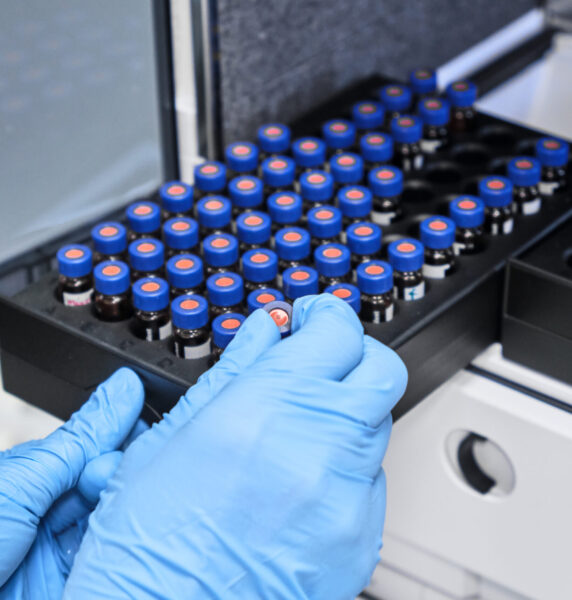
To address these issues, we developed Lipostar, novel vendor-neutral high-throughput software that effectively supports both targeted and untargeted LC-MS lipidomics, implementing data acquisition, user-friendly multivariate analysis (to be used for model generation and new sample predictions), and advanced lipid identification protocols that can work with or without the support of preformed lipid databases. Moreover, Lipostar integrates the lipidomic processes with a full metabolite identification (MetID) procedure, essential in drug safety applications and in translational studies. Case studies demonstrating a number of Lipostar features are also presented.
- Wenk MR (July 2005). “The emerging field of lipidomics”. Nat Rev Drug Discov. 4 (7): 594–610. doi:10.1038/nrd1776. PMID 16052242. S2CID 83931214.
- ^ Watson AD (October 2006). “Thematic review series: systems biology approaches to metabolic and cardiovascular disorders. Lipidomics: a global approach to lipid analysis in biological systems”. J. Lipid Res. 47 (10): 2101–11. doi:10.1194/jlr.R600022-JLR200. PMID 16902246.
- ^ “Lipidomics”. The Lipid Chronicles. 2011-12-15. Retrieved 2012-01-08.
Articles:
- Guiding the choice of informatics software and tools for lipidomics research applications
- February 2023.
- Software and Computational Tools for LC-MS-Based Epilipidomics: Challenges and Solutions
- January 2023. Tito Damiani, Stefano Bonciarelli, Gerhard G Thallinger, Nikolai Koehler, Christoph A Krettler, Arif K Saliho
- A platelet lipidomics signature in patients with COVID-19
- December 2023. Laura Goracci, Eleonora Petito, Alessandra Di Veroli, Emanuela Falcinelli, Caterina Bencivenga, Elisa Giglio, Cecilia Becattini, Edoardo De Robertis, Gaetano Vaudo, Paolo Gresele
- Analysis of Phosphatidylinositol Modifications by Reactive Nitrogen Species Using LC-MS: Coming to Grips with Their Nitroxidative Susceptibility
- July 2023. Stefano Bonciarelli, Bruna Neves, Pedro Domingues, Tânia Melo, Laura Goracci, Maria Rosário Domingues
- Analytical and computational workflow for in-depth analysis of oxidized complex lipids in blood plasma
- November 2022.
- Retinoic acid-induced 1 gene haploinsufficiency alters lipid metabolism and causes autophagy defects in Smith-Magenis syndrome
- November 2022.
- Role of mitochondria and cardiolipins in growth inhibition of breast cancer cells by retinoic acid
- October 2019. Terao M, Goracci L, Celestini V, Kurosaki M, Bolis M, Di Veroli A, Vallerga, A, Fratelli M, Lupi M, Corbelli A, Fiordaliso F, Gianni M, Paroni G, Zanetti A, Cruciani G, Garattini E.
- Computational solutions in redox lipidomics – Current strategies and future perspectives
- November 2019. Ni Z, Goracci L, Cruciani G, Fedorova M.
- Delving into the Polar Lipidome by Optimized Chromatographic Separation, High-Resolution Mass Spectrometry, and Comprehensive Identification with Lipostar: Microalgae as Case Study
- September 2018. La Barbera G, Antonelli M, Cavaliere C, Cruciani G, Goracci L, Montone CM, Piovesana S, Laganà A, Capriotti AL
- Nutritional and lipidomics biomarkers of docosahexaenoic acid-based multivitamin therapy in pediatric NASH
- February 2019. Torquato P, Giusepponi D, Alisi A, Galarini R, Bartolini D, Piroddi M, Goracci L, Di Veroli A, Cruciani G, Crudele A, Nobili V, Galli F.
- Lipostar, a Comprehensive Platform-Neutral Cheminformatics Tool for Lipidomics
- May 2017. Goracci L, Tortorella S, Tiberi P, Pellegrino RM, Di Veroli A, Valeri A, Cruciani G.
- Use of lipidomics to investigate sebum dysfunction in juvenile acne
- June 2016. Camera E, Ludovici M, Tortorella S, Sinagra JL, Capitanio B, Goracci L, Picardo M.
Videos:
- Untargeted And Targeted Lipidomics: From Raw Data To Bio-Pathways
- Practical Applications for Drug Discovery 2020 Webinar. Laura Goracci
- Solutions For Flux Analysis In Lipidomics
- Practical Applications for Drug Discovery 2020 Webinar. Laura Goracci
- Biomarkers Discovery And Beyond: The Trend Analysis
- Practical Applications for Drug Discovery 2020 Webinar. Alla Kloss, Laura Goracci

